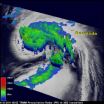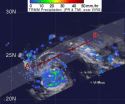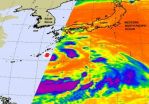(Press-News.org) Recently published studies by a researcher in the Faculty of Medicine & Dentistry demonstrate that ALS – known as Lou Gehrig's disease – damages neurons in parts of the brain responsible for cognition and behaviour.
ALS, which stands for amyotrophic lateral sclerosis, is a fatal neurodegenerative disease that eventually leaves patients unable to move, breathe or swallow. Previous research has shown about 50 per cent of patients with ALS also have mild cognitive and behavioural changes, but between five and 15 per cent of patients can have severe changes resulting in dementia. In Canada, between 2,500 and 3,000 people live with the disease. Most die within two to five years of diagnosis.
Sanjay Kalra, a researcher in the faculty's Division of Neurology and a practising neurologist, has published two papers this year in the American Journal of Neuroradiology providing evidence that ALS affects more than just the motor cortex, the part of the brain responsible for motor function.
"ALS was previously thought to be a disease restricted to the motor system causing only weakness," says Kalra, the principal investigator in both peer-reviewed papers.
"But a significant proportion of people with ALS also have cognitive and behavioural changes. We wanted to know how ALS was impacting other parts of the brain to cause these symptoms.
"There is increasing evidence from pathological studies of ALS patients post-mortem that not just the motor system is involved. Our research supports this and demonstrates in those living with ALS, that the disease is indeed attacking other parts of the brain. The cognitive and behavioural changes we are seeing in patients are not reactive," he says. "They are not happening because someone is depressed or doesn't have initiative because he is weak. Those changes are happening because there are biological and chemical changes in parts of the brain that are responsible for behaviour and cognition."
Kalra uses magnetic resonance imaging (MRI) not to just look at pictures of the brain, but also as a means of measuring the levels of various chemicals in the brain. In his most recently published paper, he looked at two different chemicals called NAA and mIns. NAA is known as a neural marker, which means it is only found in neurons, while levels of mIns increase when there is abnormal scarring in the brain.
"If NAA is decreased, it means neurons have died or they are not working. Many papers have shown NAA to be decreased in regions where you expect it to be decreased with ALS – the motor cortex. But our recent study shows that these levels are also decreasing in areas of the brain responsible for cognition and behaviour," says Kalra.
His paper published in early 2011 looked at decreasing levels of NAA in the cingulate cortex – the first time MRI had been used to measure chemicals in this region of the brain in ALS. And his most recently published paper, which came out late this summer, was the first to demonstrate that NAA was decreasing and mIns was increasing in the frontal lobe, even when there weren't signs of cognitive or behavioural issues in patients. The frontal lobe is considered the hub for cognition and behaviour in the brain.
Kalra would like to continue his research using MRI to track the changes in the brain of those who have ALS, and to evaluate new drugs. Kalra is the leading researcher in Canada to use MRI to study ALS. In November 2010, he was invited to give a presentation at Oxford University, and earlier this year he collaborated with a number of international researchers to write a commentary piece in Lancet Neurology about this growing area of research.
He first became interested in studying ALS when he was a neurology resident looking for a research project using MRI.
He has continued studying the disease ever since.
INFORMATION:
Funding for this research was provided by the University Hospital Foundation, the MSI Foundation of Alberta, ALS Society of Canada, ALS Association, and the Shelly Mrkonjic ALS Research Fund.
END
GALVESTON, September 16, 2011 – Researchers have shown for the first time that the protein fortilin promotes growth of cancer cells by binding to and rendering inert protein p53, a known tumor suppressor. This finding by researchers at the University of Texas Medical Branch may lead to treatments for a range of cancers and atherosclerosis, which p53 also helps prevent, and appears in the current print issue of the Journal of Biological Chemistry.
"The p53 protein is a critical defense against cancer because it activates genes that induce apoptosis, or the death of cells. ...
LA JOLLA, CA -- A "hidden" code linked to the DNA of plants allows them to develop and pass down new biological traits far more rapidly than previously thought, according to the findings of a groundbreaking study by researchers at the Salk Institute for Biological Studies.
The study, published today in the journal Science, provides the first evidence that an organism's "epigenetic" code - an extra layer of biochemical instructions in DNA - can evolve more quickly than the genetic code and can strongly influence biological traits.
While the study was limited to a single ...
MADISON, WI, SEPTEMBER 16, 2011 -- Durum wheat is a valuable cereal crop widely used for human consumption in the United States, Canada, and several European countries. Scab or Fusarium head blight is one of the crop's most serious diseases, reducing its grain yield and quality. Current durum cultivars don't have resistance to this widespread disease.
While working on the Durum Germplasm Enhancement Project (DGE), Dr. Prem Jauhar and staff at the USDA-ARS Northern Crop Research Laboratory, Fargo, ND discovered that a diploid wheatgrass contains the genes needed for scab ...
DURHAM, N.H. – Beginning Sunday, September 18, 2011 at NASA's launch facility in Fort Sumner, New Mexico, space scientists from the University of New Hampshire will attempt to send a balloon up to 130,000 feet with a one-ton instrument payload to measure gamma rays from the Crab Pulsar, the remains of a supernova explosion that lies 6,500 light years from Earth. The launch is highly dependent on weather and wind conditions, and the launch window closes at the end of next week.
The Gamma Ray Polarimeter Experiment (GRAPE), which was designed and built at the Space Science ...
MADISON, WI, SEPTMEBER 12, 2011 -- Modifying soybean seed to increase phosphorus content can improve animal nutrition and reduce feed costs and nutrient pollution. However, further research is needed to commercialize this valuable technology. Knowledge of soybean and other crops such as maize suggest that reducing phytate, the principle storage form of phosphorus in plant tissue, in seeds reduces seed germination and emergence of seedlings in the field. In soybean, however, researchers debate whether this problem exists, and suggest that other factors may be the cause.
New ...
EAST LANSING, Mich. — A research team at Michigan State University has developed a laser that could detect roadside bombs – the deadliest enemy weapon encountered in Iraq and Afghanistan.
The laser, which has comparable output to a simple presentation pointer, potentially has the sensitivity and selectivity to canvas large areas and detect improvised explosive devices – weapons that account for around 60 percent of coalition soldiers' deaths. Marcos Dantus, chemistry professor and founder of BioPhotonic Solutions, led the team and has published the results in the current ...
VIDEO:
This animation of NOAA's GOES-13 satellite observations from Sept. 6 at 8:45 a.m. EDT through Sept. 16 at 7:45 a.m. EDT shows the movement of Hurricane Katia followed by Tropical...
Click here for more information.
Hurricane Maria joins twelve other hurricanes on record to make landfall in Newfoundland, Canada, and NASA satellite imagery revealed its inner strength.
The Tropical Rainfall Measuring Mission (TRMM) satellite passed over Hurricane Maria on Sept. ...
When the Tropical Rainfall Measuring Mission (TRMM) satellite flew over Tropical Storm Sonca on Friday, Sept. 16 it found moderate rainfall mostly on the southern side of the storm. Chichi Jima can expect some of that rainfall over the weekend as Sonca passes east of the island.
TRMM passed over Tropical Storm Sonca and its precipitation radar instrument saw moderate rainfall occurring mostly on the southern side of the storm, while light-to-moderate rainfall was occurring throughout the storm. The southern edge of the storm had rainfall rates between .78 to 1.57 inches ...
Tropical Storm Roke has changed in size and is starting to change in strength. Roke appears to be consolidating in infrared imagery from NASA's Aqua satellite.
Roke began its life as a monsoon depression with a large low-level circulation center that over time consolidated and organized. The eastern half of Tropical Storm Roke was seen in an infrared image from NASA's Aqua satellite AIRS (Atmospheric Infrared Sounder) on Sept. 15, and it showed a more consolidated center with strong convection and very cold cloud-top temperatures.
Cloud-top temperatures are important ...
Two newer drugs used to treat Type 2 diabetes could be linked to a significantly increased risk of developing pancreatitis and pancreatic cancer, and one could also be linked to an increased risk of thyroid cancer, according to a new UCLA study.
Researchers from the Larry L. Hillblom Islet Research Center at UCLA examined the U.S. Food and Drug Administration's database for adverse events reported between 2004 and 2009 among patients using the drugs sitagliptin and exenatide. They found a six-fold increase in the odds ratio for reported cases of pancreatitis with these ...



